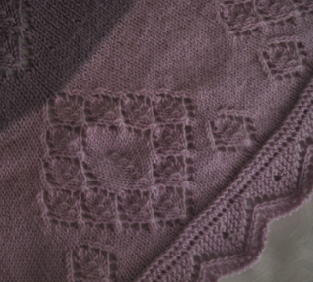Saying goodbyes
I decided to send emails to those people who had been significant in my working career, letting them know that I was retiring, thanking them for their contributions and saying farewell. This was in addition to face to face farewells. It was important for me to have closure of relationships with colleagues in a work context, although some of these relationships will continue in other contexts.
Giving with gratitude
I have liked the concept of bucket filling, which basically uses the metaphor of everyone carrying an invisible bucket that we can help fill by doing acts of kindness. As a result, we in turn fill our own buckets by giving to others. The concept also includes "bucket dipping" in that those, whose own buckets are inclined to be empty, can dip the buckets of others through negative actions.
As part of closure I decided to engage in bucket filling by making individual coffee cup holders for each of the staff members in my workplace and include a note of appreciation.
As part of closure I decided to engage in bucket filling by making individual coffee cup holders for each of the staff members in my workplace and include a note of appreciation.
Leaving systemic stress behind
During my 12 weeks leave I had begun to experience "soothing and replenishing"* after having been somewhat "burnt by the journey"* through many years of systemic stress, and found that I needed to express a myriad of emotions and to take the time to process that journey. The quotes marked with * come from an Australian adaptation of a Celtic blessing which I love. It is called "For you, deep stillness of the silent inland" by Robin Mann & Julie Perrin, and an expanded version can be found on Youtube at the following link:
However I found, during the last two weeks of my working life, that I was thrown back headlong into the many systemic sources of stress (and Mad March) and that my "bucket" was "dipped" by triggers, misunderstandings and the few people whose personal life journeys and/ or current challenges made them inclined to be "bucket dippers", and this means that I have more emotions to express and more things to process so that I can move on into the next stage of my life (I have decided that there are two separate stages at the end of life -- retirement and then old age, not just old age). I also keep reminding myself that I never have to endure any of this systemic work stress again.
As a final closure to systemic stress I composed a humorous list of things I won't miss (all non-people things that annoy most of us), accompanied by appropriate clip art pictures, and ended it by saying that I will miss all my wonderful colleagues, as it is the people make the service function and give it quality.I emailed this to everyone in my workplace shortly before I left my office for the last time (now bereft of keys and ID badges), and removed my name from my pigeon hole and the whereabouts whiteboard.
The dangers of re-opening doors
Prior to my 12 weeks leave I had gone to a great deal of conscious effort to achieve closure with my clients by reflecting on progress, referring them elsewhere if needed and discussing options for future support and/ or counselling (and saying goodbye). I returned for 2 weeks in order to plug a gap in, and finalise, clinical supervision and other senior tasks, and to do a final clean-up of my office.
Thus it was totally inappropriate for me to engage with new clients, as it was unfair on them to open up issues and then abandon them -- and there were others who could provide a counselling service for them. Clients do tell us that they don't want to repeat their stories over again to new workers.
However other non counselling staff were unable to understand this and tried to force me to engage with new clients -- and I began to feel quite distressed. On reflection, I realised that this was because they were asking me to re-open a closed door.
I will always be a Social Worker
I know that I will find occasions in the future where I can still use my counselling and Social Work skills, but they will be in a different context, and I started this blog so that I can retain this part of my identity.

























































